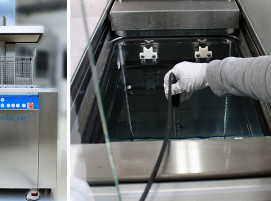
Renewable Carbon-based Materials Show Significant Lower CO2 Footprint Than Fossil Counterparts
The Renewable Carbon Initiative (RCI) published their latest report “Case Studies Based on Peer-reviewed Life Cycle Assessments – Carbon Footprints of Different Renewable Carbon-based Chemicals and Materials”. The brochure-style report was put together by sustainability experts from nova-Institute.
In the report, the RCI summarises and presents five peer-reviewed LCA case studies – representing the highest possible scientific standard – that examine the carbon footprint of
materials and products made from renewable carbon. These five products and the respective LCAs are from the RCI members Avantium (NL), BASF (DE), IFF (US), Lenzing (AT) and Neste (FI), and have all been peer-reviewed by external, independent experts. In times of “Code Red” warnings by the UN on climate change, the carbon footprint of chemical and materials is one of the most crucial indicators. Fossil resources are the main cause of human-made climate change, responsible for more than 70 per cent of global warming.
Where feasible, like in the energy sector, decarbonisation reduces the dependence on carbon as a feedstock. But for carbon-dependent industries, defossilisation is the right strategy to eliminate additional influx of fossil carbon into our carbon cycles and the atmosphere – and at the same time we need to ensure that the alternatives really reduce greenhouse gas
emissions. To achieve defossilisation, renewable carbon feedstocks, which can be bio-based, CO2-based or recycled, need to substitute the dominant fossil feedstock in the production of chemicals and materials. These sectors rely on carbon as a feedstock and cannot do without. A key aspect of replacing fossil carbon with renewable carbon is the gained circularity of carbon. The principle advantage of renewable carbon feedstock is that it originates from atmosphere, biosphere and technosphere and therefore does not bring additional fossil carbon from the ground into the carbon cycle above ground. Instead, these feedstocks help to build and realise a truly circular economy and circular carbon loops.
All in all, the here presented materials and products show significantly reduced carbon footprints compared to their established fossil counterparts already today. The brochure
visualises that there are not only competitive materials and products made of renewable carbon already on the market, but that they also show significantly reduced carbon footprints compared to their established fossil counterparts. These reductions ranging from 30 to 90 per cent but at the same time, these materials and products still have significant potential to further reduce emissions in the future.
The introduction states: “As you delve into this brochure, we invite you to consider the implications of renewable carbon-based materials on climate change. We believe the case studies provide essential information to guide policy decisions in our pursuit of our climate and net-zero targets.” One key implication is that the less additional fossil carbon is added to our above-ground cycle, the smaller will be the amount of carbon emissions that have to be balanced out with expensive atmospheric removal and underground storage of carbon.
Read full report
(Source: The Renewable Carbon Initiative (RCI) Press Release)






